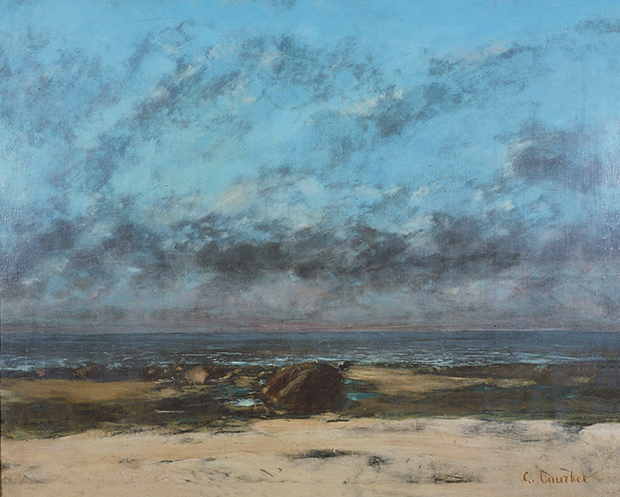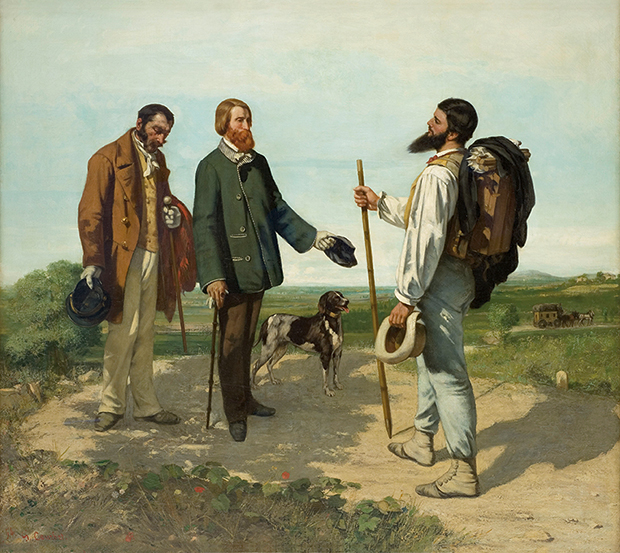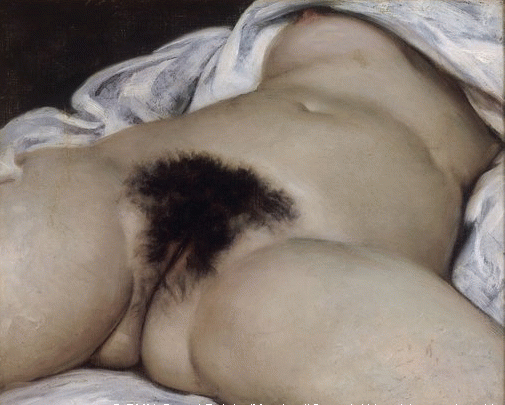
How Courbet retains the power to shock
A newly opened European exhibition places the French painter’s most explicit and controversial work at its centre
French realists may have shocked the world once with their depictions of everyday life, yet their power to both appal and challenge us has been superseded by more recent artists, like Andy Warhol, Paul McCarthy and Monica Bonvicini.
Nevertheless, a newly opened exhibition of the works by the 19th century painter Gustave Courbet centres on a single work that still divides onlookers today. Fondation Beyeler, near Basel in Switzerland, has just opened its five-month long exhibition devoted to Courbet. The show, which consists of 50 to 60 works, features well-known studies such as La Rencontre (Encounter), as well as well as landscapes such as The Seafront at Palava, and a number of the artist’s nude studies, including The Three Bathers.

However, one particular nude, which the Fondation says lies at the heart of the exhibition, doesn’t feature on the museum’s website or among its publicity images. The painting is The Origin of the World. Created in 1866, it is a moderately realistic depiction of a woman’s labia. The work was, as the art historian James H Rubin explains in our Courbet book, commissioned by a retired Ottoman ambassador in Paris, “who appreciated frankly erotic art.”
Nevertheless, Courbet’s creation cannot be simply dismissed as oil-on-canvas pornography. “The painting was surely made as much for shock value as for erotic arousal,” Rubin writes, “and, although made for the private delectation of an individual connoisseur, it inevitable suggests a commentary on Courbet’s own anxious relations with women,” which Rubin characterises as numerous and troubled. By stripping this nude of all but it’s most private of body parts, “the picture reduces desire to the crude essentials of a fetish.”
This reduction isn't wholly uncharacteristic of the artist's wider oeuvre. Courbet was known for stripping away the artistic tropes common in 19th century painting, showing common people and scenes free from the prevalent social and aesthetic prejudices.
Nevertheless, both the painting’s title and its obvious artfulness cuts against a simplistic, smutty interpretation. Instead of simply accepting the picture’s shock value, it’s hard not to look again, and consider its artistic merits. As Rubin puts it, in this picture and others, “Courbet conflated the obviously symbolic resonances of the feminine ideal with the realism of palpable flesh and erotic desires.”
This conflation lives on. Facebook have chosen to censor posts of the image, while, back in 2009, Portuguese police seized a book for reproducing the work on its cover.

Other artists have certainly produced cruder images, and more beautiful nudes, yet few have created anything that lies so crisply between the two extremes, which was, perhaps Courbet's eventual aim. As Eileen Costello notes in her Jeff Koons review, the French artist once wrote to his parents, stating "when I stop being controversial, I'll stop being important."
Judging by The Origin of The World, his importance lives on. Find out more about the new exhibition here, and for greater insight into his life and work, buy a copy of our Courbet book, here.